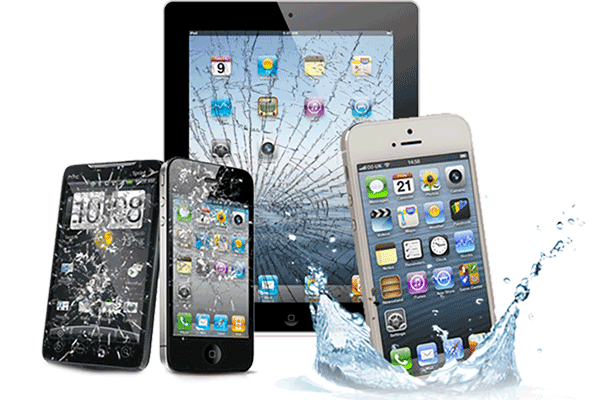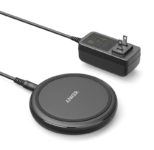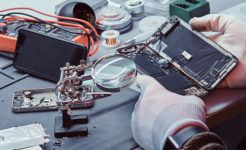
3 Ways to Remove Scratches from phone [Video]
Video uploaded by BOKIN on April 6, 2017
Successful DIY Repair (Do It Yourself) of Your Smartphone and Tablet
Modern smartphones and tablets are very fragile. They often can’t survive an occasional drop or even a dip in the pool. Phone companies usually offer a repair service for their customers but customers then have to shell out an obscene amount of money for it.
Nevertheless, if you like tinkering with gadgets and are good at it, you can try and repair your electronic devices at home. Perhaps, after reading this article you may still opt for the authorized repair service after all. Either way, the choice is yours entirely. This article is just written for enlightening purposes.
The list of faults you can fix yourself:
- A scratched or broken screen
- A blocked headphones jack
- A foggy camera
- A bad microphone or speaker
- Malfunctioning autofocus
- A weak battery
- Water inside device
Step 1: Ultimate Backup
Backup all your data from your phone and tablet. Use the tools your phone company/brand suggests…cloud storages, computers and etc. If you do it regularly already, make sure you have the latest backup. If your phone has been submerged in water, skip this step as it can damage the hardware beyond any repair.
Step 2: Find a Manual
The best choice of manuals, video instructions, and life hacks can be found at ifixit.com. YouTube is also worth checking. For example a batch of Apple inner video instructions has been leaked recently sparkling another great scandal, because the company prohibits unauthorized repairs. Surprisingly, the leaked videos added nothing to the knowledge acquired by DIY enthusiasts through reverse engineering.
Check the repairability of the models according to iFixit. Most manufacturers arrange all parts on one logic board and they can’t be removed separately, one has to replace the whole board. It’s true for the latest devices by Apple, Samsung, LG, and others.

Mobile Phone Repair Tool Kit
Step 3: Check Your Tools
Every manual features a list of tools you need to tear down your phone or tablet and replace the parts. The most important tool is the screwdriver with a set of various bits. For example, Apple uses “pentalobe” tamper-proof screws and you may need a corresponding screwdriver bit. The professional toolkit usually includes a prying blade, a spudger, a suction cup and a dust blower. Fortunately, they can be replaced with a guitar mediator/plastic card, a metal paper clip/needle/toothpick, suction cup towels hooks and a compressed air can. You also need a heat gun, some thermal gel pads, universal glue or an adhesive sticky tape, tissue napkins and isopropyl alcohol. Add a set of bowls to keep the screws and mark the bowls with stickers to remember which are which. It’s very important, because Apple uses non-magnetic screws near the speakers to avoid background white noise. You don’t want to misplace them.
Step 4: Get Spare Parts
The spare parts can be found on eBay. Read feedbacks on iFixit and eBay to find the best seller. Avoid second hand parts if possible, especially when you look for a battery. Choose a seller who accepts returns on purchases.
When you are finished with these steps, the next steps are the trickiest.
Teardown and Assembly
Most phone brands use both screws and glue to keep the phone together. Top makers like Samsung and Apple glue everything together and that stuff is very hard to get rid of.
Use a heat gun or some heated gel packs to heat the phone. Put the suction cup on the back panel of the screen and try to rise the corner of it while gently running the guitar mediator or plastic card along the joints. Use the free fingers to prevent the phone from sliding. If the panel won’t go, check for any forgotten screw or apply some softener.
Before putting the device back together you should completely remove the old glue. Use a toothpick to avoid scratches. Then apply an adhesive sticky tape or some fresh glue on the edges of the panels. Let the glue dry a bit before putting the parts back together and gently squeezing them for a few minutes. You can use some weight to help hold it together like a heavy book or two.

Smartphone reparation in action
Some Tips for DIY Repair
As a rule, the screen glass is glued to the display matrix. If you’re not sure you can cope with the task of applying a new glass, replace the whole display. The same goes for camera units that are too small nowadays to be put apart at home. If you have any problems with the camera, replace the whole module.
- Be extremely careful while disconnecting flexible flat cables. Do not jerk them out! Look for a safety latch and open it first before disconnecting.
- Check if the new display or if any other part works before putting the phone back together.
- Do not replace biometrical ID modules like fingerprint scanners, because your device can be blocked afterwards.
- Avoid using second hand batteries or batteries from unauthorized/no name manufacturers.
If you have to clean slots and openings, like the speaker or the microphone grid or the headphone jack opening, use the compressed air can. Some websites advice to use a cotton swab or an unbend paper clip with duct tape wrapped around its tip. We have an opinion that such tools are of very little help. Cotton can leave lint inside while the clip can seriously damage the inside of the slot.
How to Dry Out Your Phone or Tablet
If your phone or tablet took an unexpected bath, your primary goal is to shake, blow or vacuum as much water out of it as you can.
- Get your device out of the water and dry it with paper towels, sleeves or tissue napkins.
- Remove the back panel and the battery if you can.
- Shake the phone or tablet gently to get rid of water inside. Even phones with water protection beyond IP67 are not immune to leaks.
It has been common knowledge that wet phones should be placed into a container with uncooked rice or silica gel. We are sorry to say that neither the rice or gel work. The best way to dry out a disassembled phone or tablet is to leave it on the shelf or place it in front of a fan. Give your phone or tablet two days to completely dry out.
If you decide to try a vacuum, make sure it is designed to suck water, because most of them aren’t. We personally recommend a compressed air can or at least a rubber bulb, because when it comes to hardware cleaning, blowing is better than sucking. You don’t want to tear any hardware parts with your vacuum.
After a couple of days, when your phone is completely dry, you should wipe the internals of the device with non-lint tissues and isopropyl alcohol to avoid corrosion. Otherwise your survivor may end up dying shortly after. Do not put the dried battery back! It won’t work. Replace it with a new one.
If you’re not sure that you are able to handle any of these tasks, it is then probably best if you bring your device to a professional service to get it cleaned or repaired. We hope this article was interesting and helpful if you do try to attempt any DYI cleaning and repairing at home.
Disclaimer: Remember that professional experts will be able to care about your device much better than you. Anyone should proceed to “Do It Yourself mode” (DIY repair) only if they do not have any access to a professional service. Otherwise, you could even cause more damage than revive your gadget. Remember that any DIY action is always done at one’s own risk.
Links
- Apple Support Page – Apple
- Check Your Device IMEI/MEID/ESN – iGotOffer
- Check iCloud Activation Lock Status – iGotOffer
- Thinking to sell your old phone? iGotOffer is the best place to sell smartphones and other devices online.
- Everything About Apple’s Products – The complete guide to all Apple consumer electronic products, including technical specifications, identifiers and other valuable information.
- Everything About Microsoft’s Products – The complete guide to all Microsoft consumer electronic products, including technical specifications, identifiers and other valuable information.






Facebook
Twitter
RSS